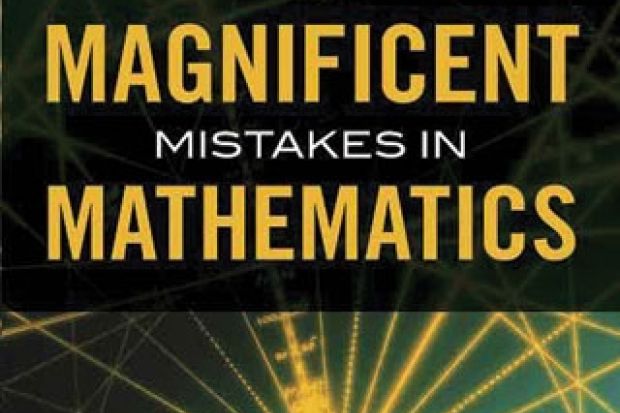For mathematicians, mistakes are serious. An incorrect step in a proof renders it useless; a slip in a calculation usually means that the result is wrong. But mathematicians are human, and even the best of them can make mistakes. Occasionally errors can even have happy consequences. For example, Pierre de Fermat’s note in a margin in 1637 that he had a marvellous proof of the result now known as “Fermat’s Last Theorem” is thought to have been mistaken, but the attempts by a succession of great mathematicians to prove this result led to important developments (and more mistakes) that opened up new areas of mathematics: eventually Andrew Wiles found a valid proof in 1995. A more recent example is Alfred Bray Kempe’s subtly incorrect 1879 proof of the Four Colour Theorem, which was not identified as erroneous for 11 years, and the subsequent notoriety of this problem motivated a wider range of new ideas in graph theory before Kenneth Appel and Wolfgang Haken’s computer-assisted proof in 1976 raised profound questions about the nature of mathematical proof.
Alfred Posamentier and Ingmar Lehmann begin their survey with examples of “noteworthy mistakes by famous mathematicians”. This is the section that might most persuade the reader of the magnificence of mathematical mistakes, but the analysis is disappointingly brief. We aren’t told enough about how the mistakes were made, how they were discovered and how they stimulated new mathematics. The authors occasionally criticise great mathematicians for proposing conjectures that turn out to be false, but those who make conjectures are generally proposing interesting undecided problems rather than claiming absolute knowledge, and it’s unfair to call them mistakes.
The authors then change tack, analysing fundamental mistakes frequently made in elementary mathematics, such as division by zero or percentage miscalculation. There is some interesting material in this section, but the variations in level are puzzling: readers who enjoy the discussion of the Malfatti Problem or the Catalan Conjecture in the first chapter may feel that some of the trivial examples here are not worth the space they are given. But some examples are entertaining: for instance, in 1898 The New York Times followed issue number 14,499 with issue 15,000, an error that was eventually corrected only in 2000. However, the authors repeat the myth that a misplaced decimal point in a published estimate of the iron content for spinach led to the vegetable being presented as the source of Popeye’s impressive strength: recent research suggests that this tale was invented in a light-hearted article in the 1981 Christmas issue of the British Medical Journal.
More to my taste are examples of the deliberate “false proofs” that mathematicians invent for entertainment, where a misleading diagram or carefully obscured error leads to an apparently valid proof of a ridiculous result such as the proposition that all triangles are isosceles. Some of these are likely to be familiar to most readers, but this book provides a collection of examples that could usefully illustrate undergraduate teaching materials on proof.
The book concludes by discussing subtle errors and confusions in probability, which often result from imprecise wording. Once again, some examples are banal while others are genuinely interesting. The final exercise presenting five different solutions to “a counterintuitive prediction of the sex of a child” makes hard work of an easy question!
According to the blurb, Posamentier has published 55 books, five of them co-written with Lehmann. This collection of “magnificent mistakes” contains some nice examples, but it reads as if it has been written in haste, and it fails to make the most of the opportunity to explore the fascinating issues raised by mistakes in mathematics. Overall, it is something of a curate’s egg.
Magnificent Mistakes in Mathematics
By Alfred S. Posamentier and Ingmar Lehmann
Prometheus, 296pp, £15.78
ISBN 9781616147471
Published 13 August 2013
Register to continue
Why register?
- Registration is free and only takes a moment
- Once registered, you can read 3 articles a month
- Sign up for our newsletter
Subscribe
Or subscribe for unlimited access to:
- Unlimited access to news, views, insights & reviews
- Digital editions
- Digital access to THE’s university and college rankings analysis
Already registered or a current subscriber? Login




